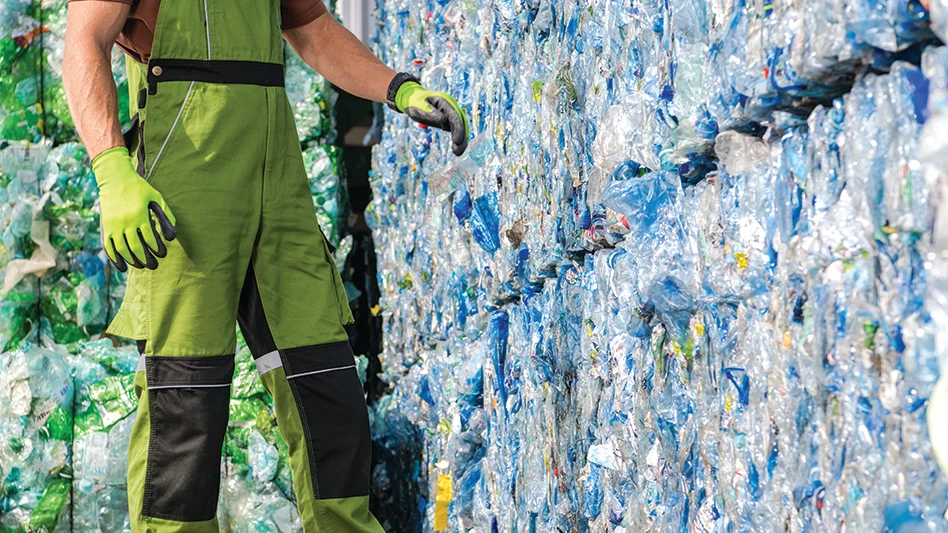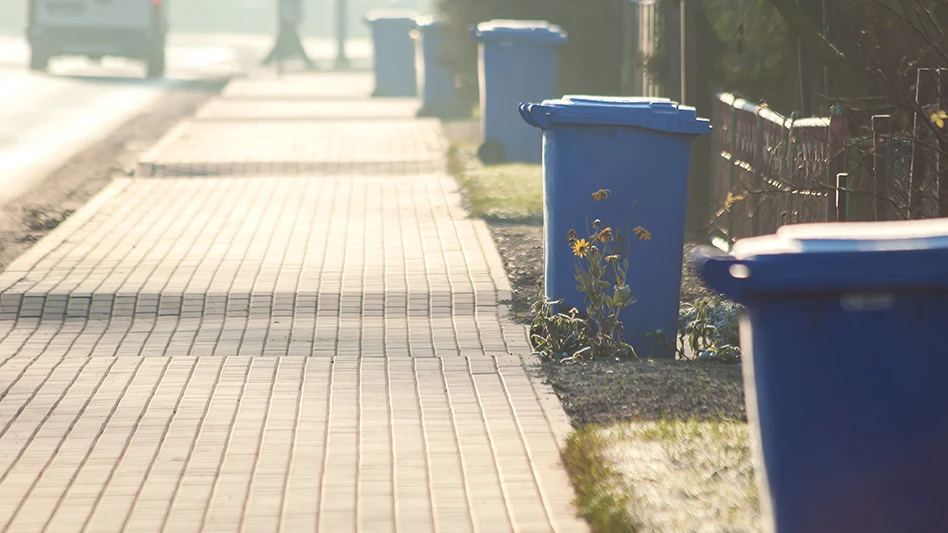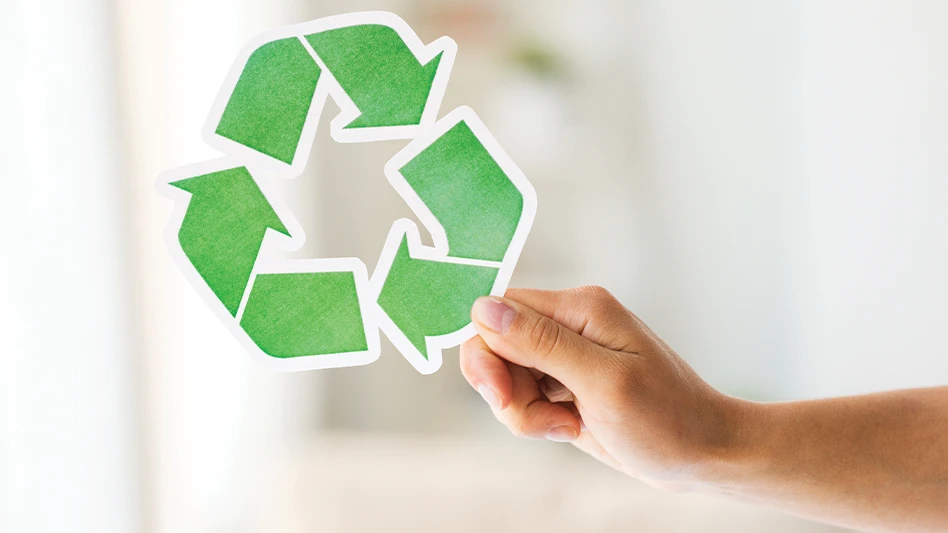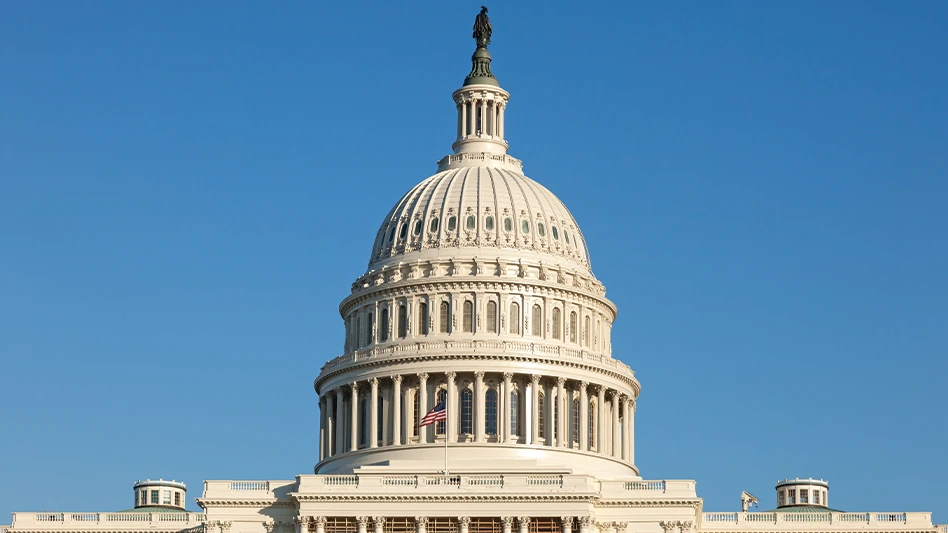
According to figures released by the Association of Plastic Recyclers (APR) and the American Chemistry Council (ACC), both based in Washington, plastic bottle recycling declined by 3.6 percent to 2.8 billion pounds in 2017. The 28th annual "National Postconsumer Plastic Bottle Recycling Report" indicates the overall recycling rate for plastic bottles for the year was 29.3 percent, a decline of 0.4 percentage points from 29.7 percent in 2016.
The five-year compounded annual growth rate for plastic bottle recycling was 0.1 percent, according to the associations.
Among the factors that that contributed to the decline were changing export markets and a 3.6 percent drop in material collected for recycling, the report notes. Ongoing increases in single-stream collection also led to increased contamination of recyclables. In addition, growth in the use of plastic in bottles was offset by continuing progress in lightweighting and increased use of concentrates, which are packaged in smaller and lighter bottles.
Polyethylene terephthalate (PET) bottles collected for recycling decreased by 27 million pounds for a total of 1,726 million pounds in 2017, the report notes, while high-density polyethylene (HDPE) bottles declined even more steeply. Slightly more than 1 billion pounds of bottles of this type were collected, which is 70.3 million pounds, or 6.3 percent less, than in 2016. The recycling rate for HDPE bottles slipped from 33.4 percent to 31.1 percent in 2017, the report notes.
Exports of HDPE bottles fell nearly 28 percent from 193 million pounds to 140 million pounds, or 13.4 percent of total HDPE bottles collected in 2017. According to the report, the processing of recycled HDPE sourced domestically and imported fell by 31 million pounds in 2017.
Despite the declines, Steve Alexander, APR president, says, “Plastic bottle recycling is proving to be resilient in the face of short-term challenges. The recycling industry is responding in kind, with some investing in increased U.S. infrastructure, a clear sign of a positive long-term outlook. These investments underscore the need for continued consumer participation and convenient access to recycling programs.”
“Increasing plastics recycling is a critical part of moving toward a more circular economy, and commitments made across the value chain—from brand owners to plastics makers to recyclers—give us good reason to be optimistic about the long-term prospects for plastics recycling,” says Steve Russell, ACC vice president of plastics. “Plastics makers in North America and Europe have committed to recycle or recover all plastic packaging by 2040.”
This year’s survey found the collection of polypropylene (PP) bottles fell 15.2 percent to 31.1 million pounds, as the PP collection rate dropped to 17.2 percent. PP caps, closures and nonbottle containers are widely collected for recycling in the United States, and these data are presented in a separate report on recycling nonbottle rigid plastics, which will be released in the coming months.
Together, PET and HDPE bottles make up 97 percent of the U.S. market for plastic bottles, with PP comprising 1.9 percent; low-density polyethylene (LDPE), 0.7 percent; and PVC, 0.3 percent. Together, PET and HDPE comprise 98.8 percent of bottles recycled, with PP comprising 1.1 percent, according to the associations.
Data on PET recycling referenced in the report were separately funded and published by APR and the National Association for PET Container Resources (NAPCOR), Florence, Kentucky. A separate report, “Report on PET Container Recycling Activity in 2017,” is available on APR’s website.
The “2017 United States National Postconsumer Plastic Bottle Recycling Report” is based on a survey of reclaimers conducted by Sonoma, California-based More Recycling.
Latest from Recycling Today
- Resource Recycling Systems transitions to employee ownership model, refreshes branding
- APR upgrades PCR certification program
- WM completes $40M automation project at Philadelphia MRF
- Speira commissions new furnace in Germany
- ABB report portrays paper sector circularity, emissions reduction
- RMDAS and Davis Index numbers portray stalled ferrous market
- Attero adds NGO veteran to its board
- AMCS launches the AMCS Platform Winter 2024





